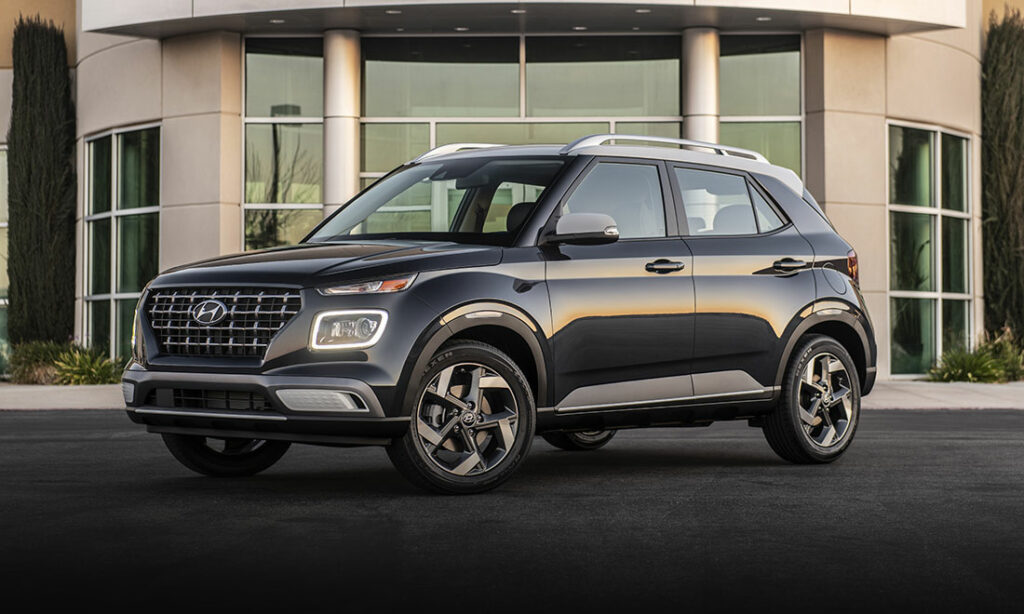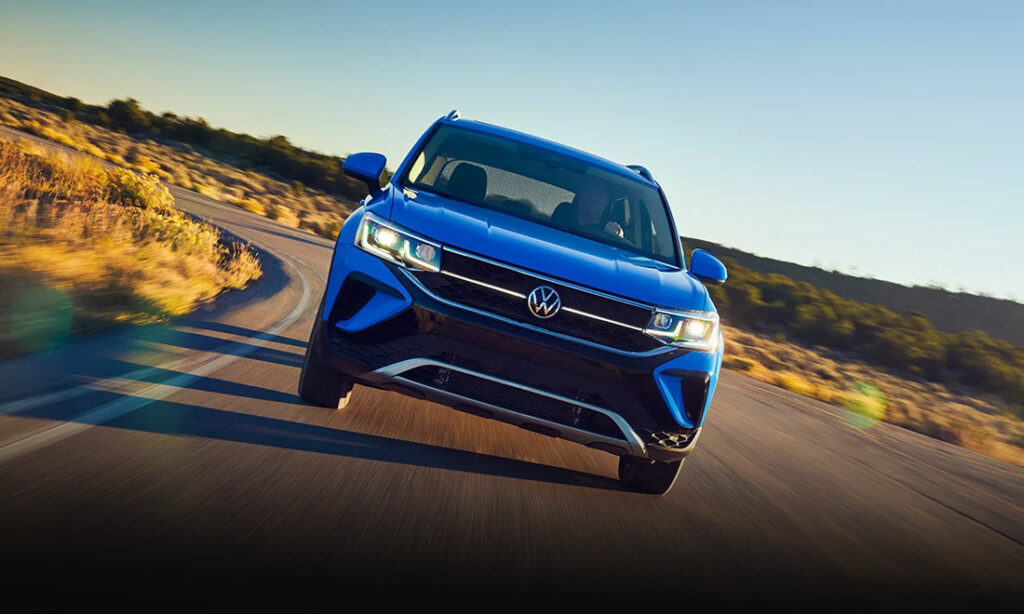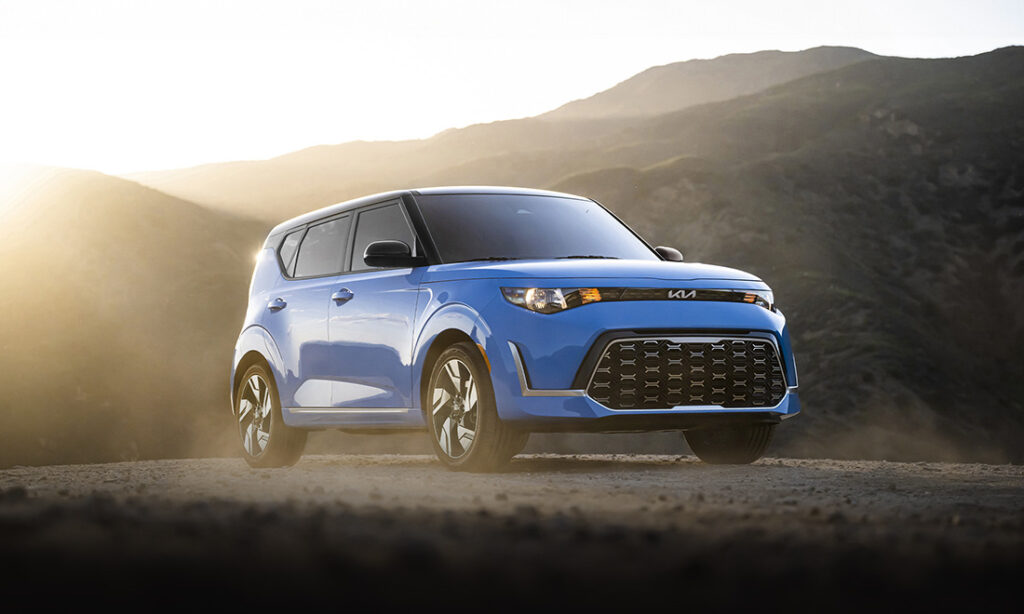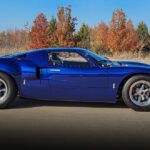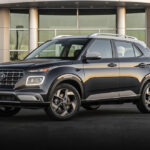Retro Review: AMC Ambassador
Though lesser known today, the Ambassador served as AMC’s flagship model for nearly two decades, loaded with style and luxury appointments.
American Underdog
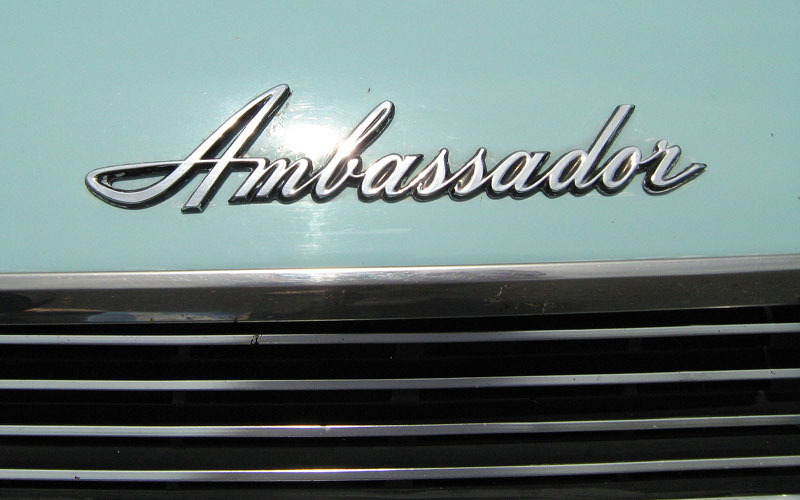
America loves an underdog. Car nerds love the esoteric. The automotive Venn diagram overlap of these two observations lands us squarely on AMC, American Motors Corporation. AMC might not be all that esoteric if you were around in their heyday, from roughly the middle 1950s through the late 1970s, but the mere sight of an AMC on the road today is a rare occurrence indeed.
By the 1970s, AMC was like the Tuatara or the horseshoe crab, an evolutionary relic of a bygone era. AMC’s mere existence harkened to the early 20th century when competition flourished in the burgeoning automotive sector as new car companies winked in and out of existence. The AMC was the product of a merger between Nash-Kelvinator and Hudson in 1954. To take on the titans of Detroit (Ford, GM, and Chrysler), AMC focused on smaller more affordable cars while the hyper-competitive market of the mid-to-late ‘50s was focused on chrome-decked, fin-sporting hulks like the Chevy Bel-Air.
One consistent exception to AMC’s approach was the Ambassador, which for most of its run was offered as a full-size car competing directly against the likes of the Ford Galaxie and Chevy Impala.
First Generation
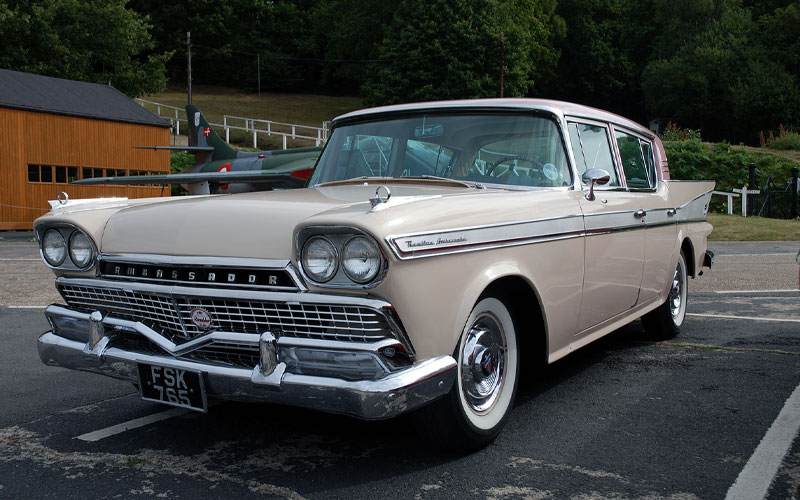
The Ambassador name predates the formation of AMC proper, deriving from the Nash Ambassador dating back to the late-1920s. For the first few years, AMC chose to market cars using alternately the Nash or Hudson marques. The Ambassador remained under the Nash banner through 1957 when the name was transitioned to a new long-wheelbase version of the Rambler and AMC began phasing out the Nash and Hudson marques.
The Ambassador was marketed as the “Ambassador by Rambler.” The Ambassador stretched the wheelbase of the Rambler Six/V8 from 108 inches to 112 inches. The sole engine available was AMC’s 327 cu.-in. V8 (270 horsepower) which came paired with a three-speed automatic transmission. It was offered in four-door sedan and station wagon body styles and offered such upscale features as automatic climate control, a limited-slip differential, and seat belts.
Second Generation
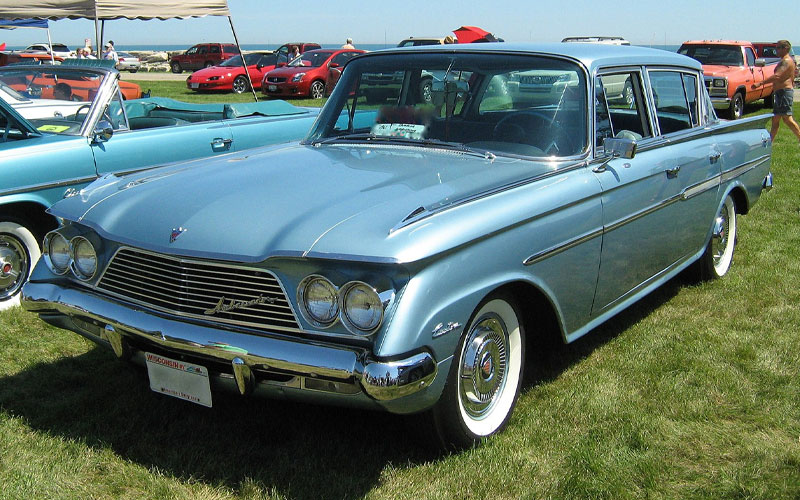
The Ambassador received a rapid succession of updates and frequent generational turnover during its run. Hence, the 1958 car was promptly replaced for 1959 with an updated version that revised the car’s looks with a new grille and new fins as well as new hardtop options for the sedan and wagon. The 327 V8’s output was now split between a version that ran on regular gas at 250 horsepower and one that required premium for 270 horsepower. Updates for the 1961 model year included more visual tweaks, like a simplified grille and new taillights as well as the discontinuation of the hardtop options.
Third Generation
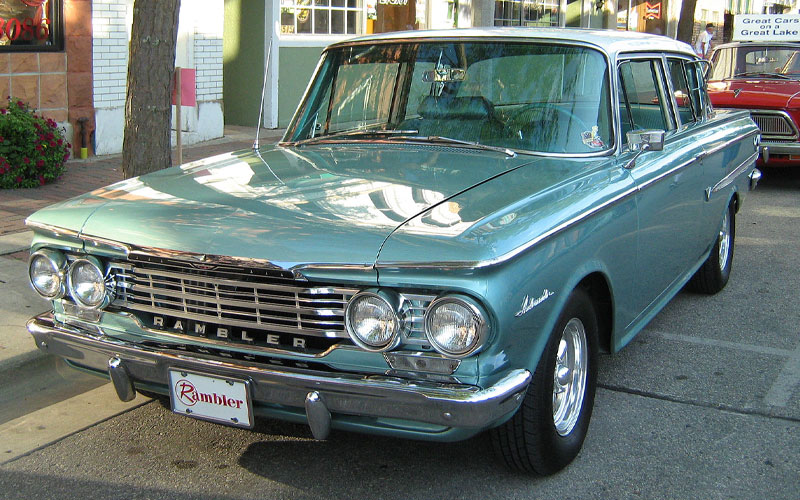
The 1962 Ambassador (now “Rambler Ambassador”) saw its wheelbase shrink to 108 inches. With this change came a new two-door sedan option to supplement the four-door sedan and wagon. The smaller, and therefore lighter, Ambassador was still powered by the same 327 V8, making it one of the quickest American cars on the market with a zero to sixty mph time of a touch over seven seconds.
Fourth Generation
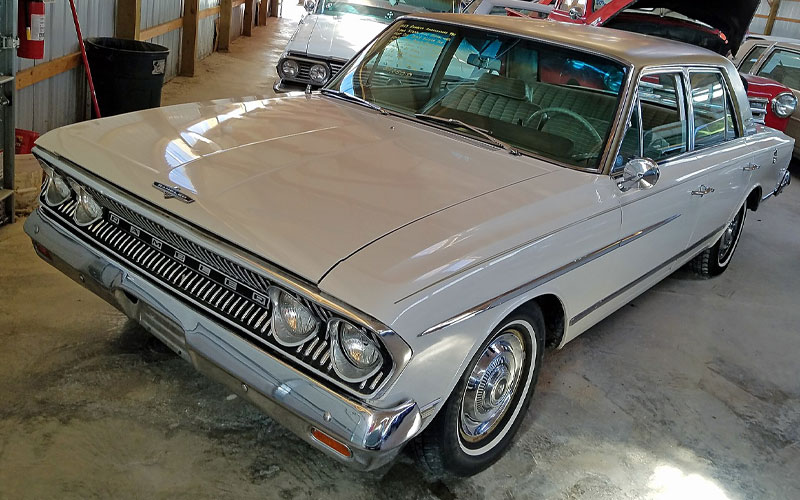
For the 1963 model year, the Ambassador reverted to a 112-inch wheelbase and offered a two-door coupe in place of the hardtop. The Ambassador, along with the Rambler Classic, was one of the first new designs from AMC’s Dick Teague, formerly of Packard and Chrysler, who would shape AMC’s penchant for quirky, innovative styling for over a decade. Visual changes abounded as the Ambassador simplified its looks with a sleeker more substantial body and a new concave grille design that some uncharitably likened to an electric shaver. For the record, this writer feels the ’63 car was one of the Ambassador’s best looks, and the car won MotorTrend’s “Car of the Year” award. Still, the criticism must have stung as AMC revised the grille once more for the 1964 model while also switching back to a two-door hardtop over the coupe.
Fifth Generation
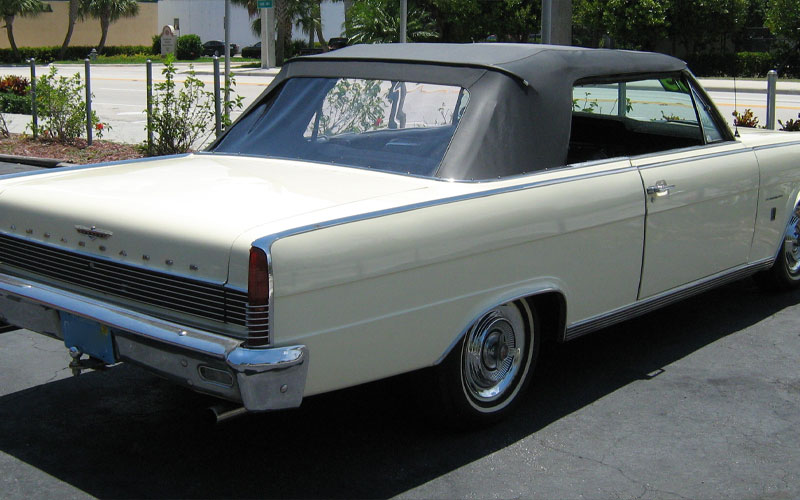
The Ambassador grew again in length for the new fifth generation starting in 1964 (for the 1965 model year). The wheelbase now stretched to 116 inches and the car’s looks evolved once more with a new convex grille and a beefy, rectilinear look not coincidentally reminiscent of the Lincoln Continental of the same period. New engines were also in the offing and included a new 232 cu.-in. straight-six and a 287 cu.-in. V8.
Sixth Generation
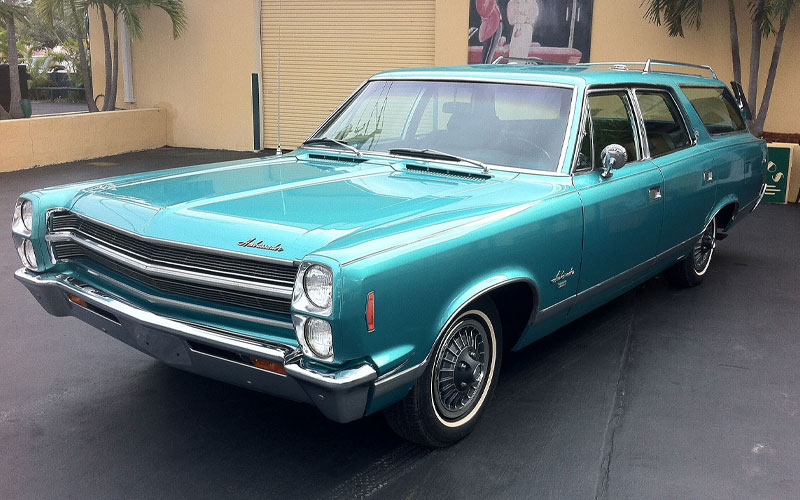
Starting with the 1967 model, the Ambassador embarked on its sixth generation as an impressive mix of luxury appointments and laudable durability. New styling followed the “coke bottle” design trend popular in the late ‘60s. Sadly, both the two-door sedan and convertible options were canceled for 1968. The wheelbase again grew, now to 118 inches, making the Ambassador a legitimate full-size offering. New engines also arrived and included 290-, 343-, and 390-cu.-in. V8s.
Seventh Generation
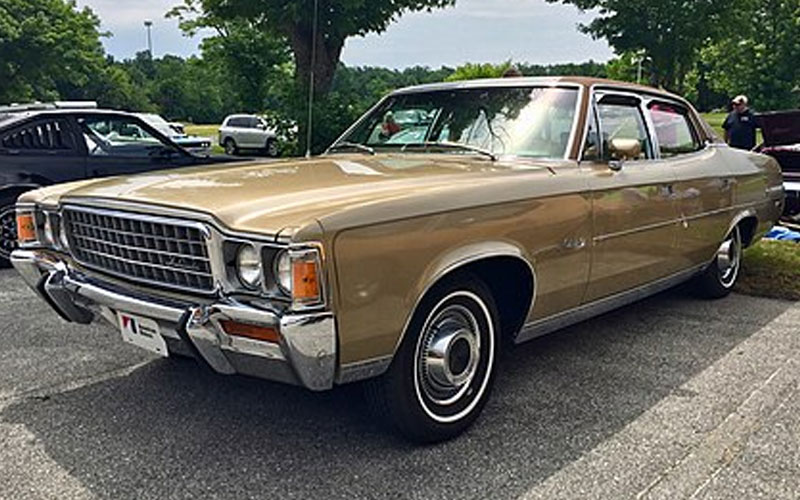
The seventh generation of the AMC Ambassador kicked off in 1968 (for the 1969 model year), and this version was the largest yet with a 122-inch wheelbase. Engine options were also neve more plentiful with either a 232 or 258 straight-six available or a range of V8s from 290 cu.-in. all the way to 401 cu.-in. The Ambassador was also nudged further upmarket with a greater emphasis on luxury that included items like velour upholstery and a smooth-riding suspension. The Brougham version was the Ambassador’s new top trim level and came standard with a 304 V8.
Eighth Generation
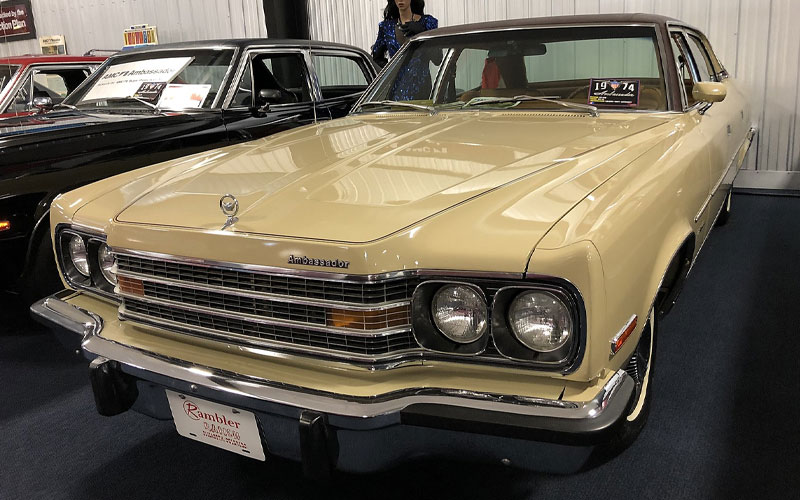
The final generation for the AMC Ambassador was also its briefest at just a single production year, 1974. Engine options were reduced to a choice of a 304-, 360-, or 401-cu-.in. V8. Body styles were likewise limited to either a four-door sedan or wagon. New styling for the Ambassador borrowed the same front-end design as the smaller AMC Matador with its memorable protruding grille.
1973 was a watershed year in the automotive industry. That year’s Oil Crisis, along with new emissions regulations, shifted the market away from gas guzzling V8 behemoths and toward smaller, more efficient cars. At the time, AMC was already seeing success with the Gremlin and was at work on their follow-up compact, the Pacer, which would soon debut for 1975. Big cars like the Ambassador were falling out of favor. AMC did the prudent thing and called it quits for the Ambassador after a nearly two-decade run.


